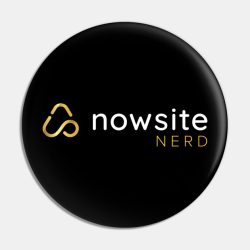TikTok Marketing: How to Harness the Power of Short-Form Videos
In recent years, the world of digital marketing has experienced a significant shift. Traditional platforms like Facebook and Instagram are no longer the sole focus of marketers. Instead, newer platforms like TikTok have taken the marketing world by storm. With its explosive growth and popularity among young audiences, TikTok has become a powerful tool for brands to reach and engage with their target market. In this article, we will delve into the world of TikTok marketing and explore how businesses can harness the power of short-form videos to boost their marketing efforts.
TikTok, an app that allows users to create and share 15 to 60-second videos, has amassed over 2 billion downloads worldwide as of 2021. It has become more than just a platform for dancing challenges or lip-syncing trends; it has become a hub for creativity, humor, and authenticity. And it is precisely these characteristics that make TikTok a goldmine for marketing opportunities.
One of the key features that sets TikTok apart from other social media platforms is its algorithm. TikTok’s algorithm is designed to personalize content for each user based on their interests and behavior. This means that every time a user opens the app, they are presented with a curated feed of videos that are most likely to capture their attention. This presents a significant advantage for businesses looking to market their products or services. By creating engaging and relevant content, brands can increase their chances of appearing on users’ feeds and reaching a wider audience.
To succeed on TikTok, businesses need to understand the platform’s culture and tap into the latest trends. TikTok is known for its viral challenges and memes, and joining in on these trends can help boost brand visibility. However, it’s essential to approach these trends with authenticity and relevance. Simply hopping on a trend without a clear connection to your brand may come across as forced or insincere.
In addition to trend-jacking, brands can also create their challenges or utilize influencer marketing. TikTok influencers, who have amassed a large following on the platform, have become powerful brand ambassadors. Collaborating with influencers can extend a brand’s reach and credibility. However, it is crucial to choose influencers whose values align with your brand and audience. Authenticity is key to successful influencer partnerships.
TikTok also offers advertising options for businesses looking to target specific demographics. With features like In-Feed Ads, Branded Effects, and TopView Ads, brands can gain visibility and drive engagement. These ad formats seamlessly integrate into the native TikTok experience, ensuring that users do not feel inundated with intrusive advertisements.
Another effective TikTok marketing strategy is user-generated content campaigns. Encouraging users to create videos using your brand’s hashtag or participate in a challenge can generate buzz and virality. User-generated content humanizes brands and fosters a sense of community. Furthermore, businesses can run contests or giveaways to incentivize users to create content, further increasing engagement.
As with any marketing strategy, it is essential to track and measure the success of your TikTok campaigns. TikTok provides businesses with in-depth analytics that can help gauge the effectiveness of their content and ads. By monitoring metrics such as views, likes, shares, and comments, brands can gain insights into what resonates with their audience and make necessary adjustments to their strategies.
In conclusion, TikTok has emerged as an influential platform for marketers seeking to engage with younger audiences. By understanding the culture and leveraging the platform’s unique features, businesses can harness the power of short-form videos to increase brand awareness, drive engagement, and boost sales. Whether through trend-jacking, influencer collaborations, user-generated content campaigns, or advertising, TikTok presents a multitude of opportunities to connect with users in an authentic and entertaining way. So, if you haven’t already, it’s time to jump on the TikTok bandwagon and explore the endless possibilities for your brand.
https://wedoallthework.now.site











